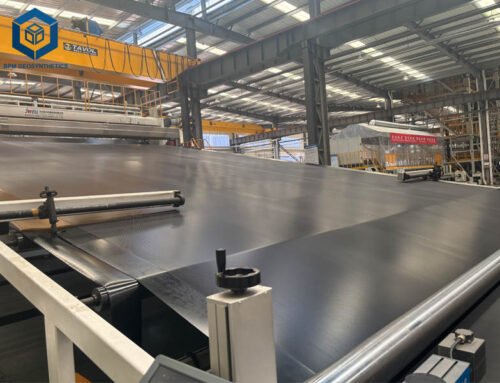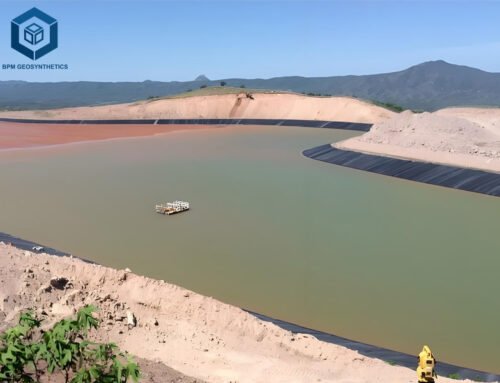Geocells and geogrids are innovative geotechnical materials widely employed in various engineering projects, including roadbeds and slope protection. While several geosynthetic products exist for ground reinforcement, geocells and geogrids are particularly popular. It is crucial to understand their distinctions and suitable applications before making a selection.
BPM Geosynthetics is the leading geogrid and geocell manufacturer and supplier, we offer a wide range of geogrid and geocell products at best factory price.
1. What Are Geocells And Its Applications?
geocells are usually made of high-density polyethylene (HDPE) or other polymers with a structure that resembles a honeycomb-like three-dimensional form. These honeycomb structures can be filled with soil, stone or other materials to form a stable structure. Geocells are used for a variety of purposes in civil engineering,
1.1 Soil fixation and reinforcement
Geocells can be filled with soil or stone to strengthen the soil, stabilize the slope, prevent soil erosion and soil movement. They enhance the stability of the soil by providing support and limiting the movement of the soil.
1.2 Slope protection and erosion control
In slope engineering, geocells can be used to prevent slope erosion and soil sliding, ensure that the soil is held in the required positioners and provide structural support.
1.2 Earth wall construction
Geocells can be used in the construction of retaining walls, as filling materials and structural supports, enhancing the stability and bearing capacity of retaining walls.
1.3 Lawn and land improvement
They can also be used to improve lawns and land, providing good soil structure and promoting plant growth and soil health.
The main advantage of geocells is their versatility and wide range of applicability. They can be adapted to different soil types and engineering needs, providing stability, preventing erosion, and supporting the implementation of a variety of civil engineering projects.
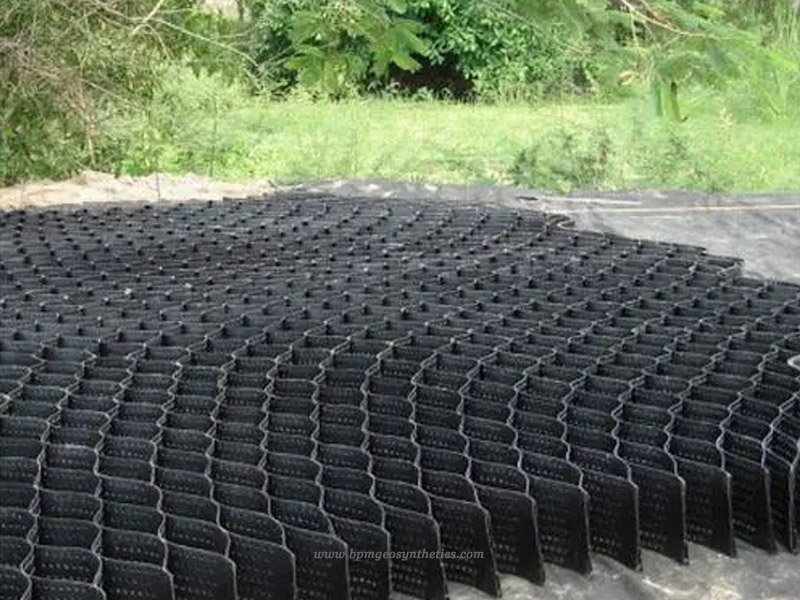
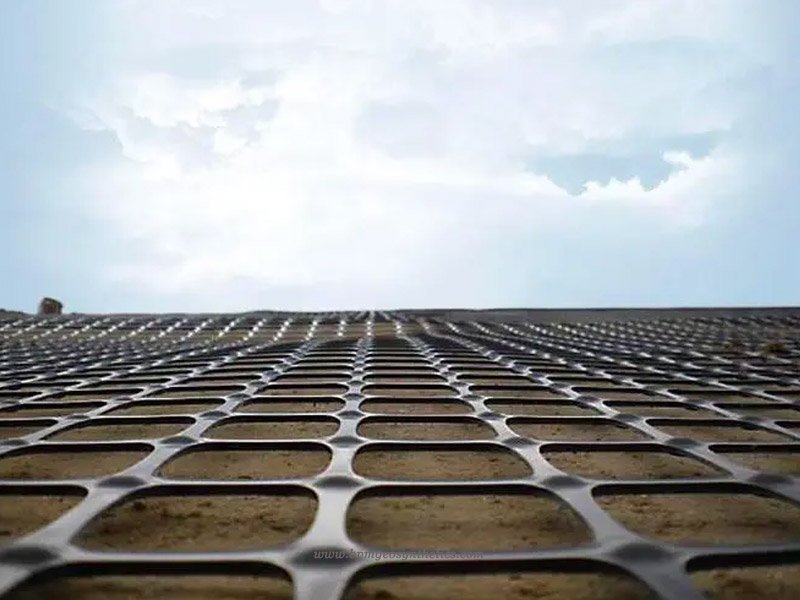
2. What Are Geogrids?
Geogrids are geotechnical materials, usually a planar or grid-like structure, made of materials such as polycool, polyethylene, polypropylene, etc. These materials are constructed in the form of grids or strips and are used in a variety of applications in soil reinforcement and civil engineering.
2.1 Soil Reinforcement and Stabilization
Geogrids are used to reinforce the soil to prevent soil slippage and erosion by providing tensile strength and increasing the bearing capacity of the soil
2.2 Subgrade and pavement reinforcement
In road and railway engineering, geogrids can be laid underneath the subgrade to reinforce the subgrade and improve the stability and load-bearing capacity of the pavement. Retaining wall and slope reinforcement: Geogrids are used to construct retaining walls or reinforce slopes, enhance their structural stability, and prevent slope collapse or soil erosion.
2.3 Drainage and soil improvement
In drainage systems, geogrids can be used to reinforce the soil and facilitate water discharge, while improving the structure of the soil, increasing its permeability and drainage performance.
2.4 Environmental protection and ecological restoration
They are also commonly used in environmental protection projects and ecological restoration projects to stabilize soils, prevent erosion, and promote vegetation growth and land restoration.
Geogrid is characterized by its high strength, corrosion resistance, adaptability and other advantages, which can provide effective soil reinforcement and engineering support, suitable for various soil types and different civil engineering needs
3. What Are The Differences Between Geocells And Geogrids?
Geogrids and geocells are both geotechnical materials that are used for soil reinforcement and engineering construction, but they differ in structure and the way they are used.
2.1 Structural differences
Geogrid is mainly composed of a grid structure made of fiber-reinforced plastic (or other materials), which has good drainage and water filtration. The grid of the grille is usually coarser and can withstand large loads.
The geocell is a three-dimensional mesh cell structure formed by high-strength welding of reinforced HDPE sheet material. It is generally made by ultrasonic needle welding. The shape of the compartment can be square, rectangular or other shapes, and there are drainage holes inside to achieve functions such as filtration, sedimentation and discharge.
2.2 Functional Differences
The geogrid mainly has the functions of drainage and water filtration, which can effectively remove rainwater, sewage and other liquids and maintain the normal operation of the drainage system.
In addition to drainage and water filtration functions, geocells can also achieve a variety of functions such as filtration, sedimentation and discharge. The drain hole inside the compartment can effectively filter and precipitate impurities in the liquid, and at the same time discharge the treated liquid through the discharge port.
2.3 Differences in Application Fields
Geogrids are mainly used for drainage systems such as roofs, roads, bridges, etc. The grid of the grid can withstand large loads and is therefore suitable for drainage systems that are subjected to large loads.
Geocells are mainly used in sewage treatment, water conservancy engineering and other fields, which can effectively realize the functions of filtration, sedimentation and discharge, and ensure the cleanliness of water quality and the normal operation of the drainage system.
Although geogrids and geocells are drainage system equipment in civil engineering construction, their structure, use, function and application fields are different. In practical applications, it is necessary to select the right equipment according to the specific needs and engineering characteristics.
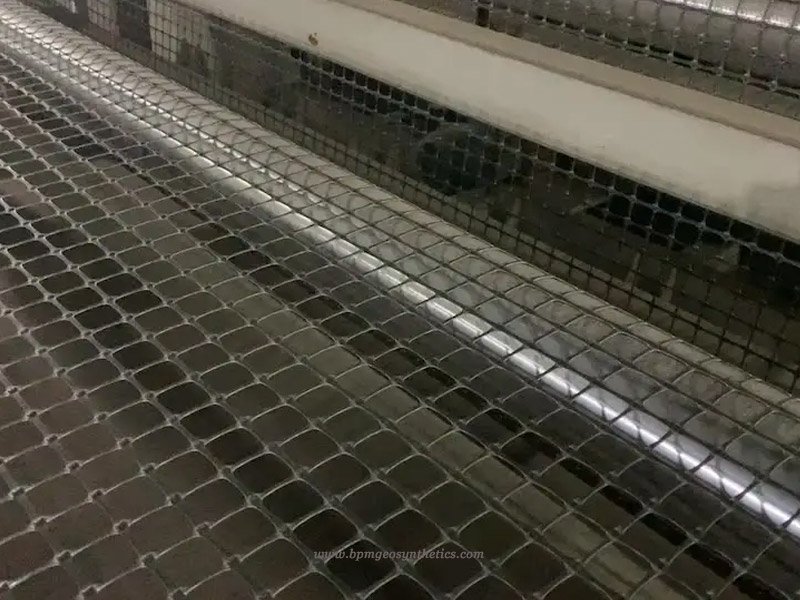
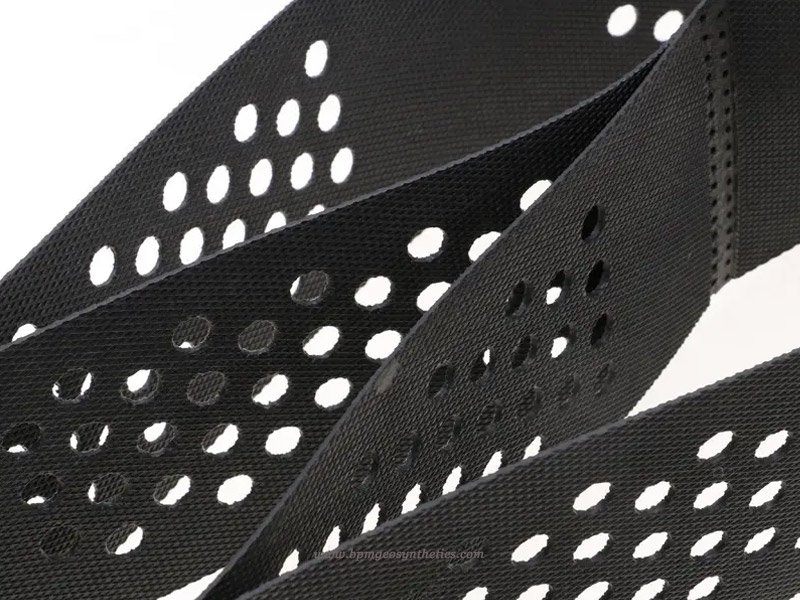
4. Summary
Geogrids and geocells are key soil engineering materials in civil engineering projects, providing support, reinforcing soil, maintaining engineering stability, and playing an important role in environmental protection and restoration. Geocells are more suitable for confinement and erosion control purposes, while geogrids are better suited for reinforcement and stabilization applications in civil engineering and construction projects. The selection of the right geotechnical materials has a significant impact on the safety and sustainability of the project.

